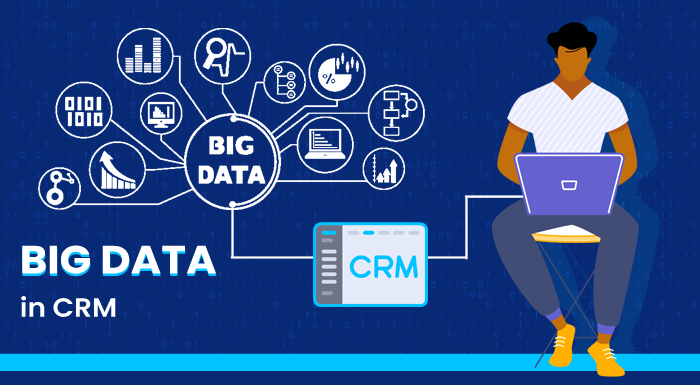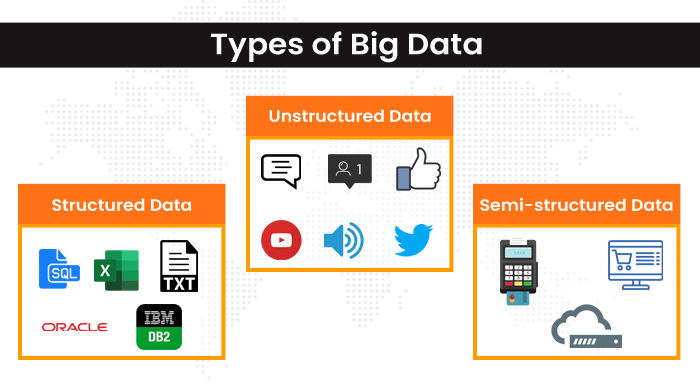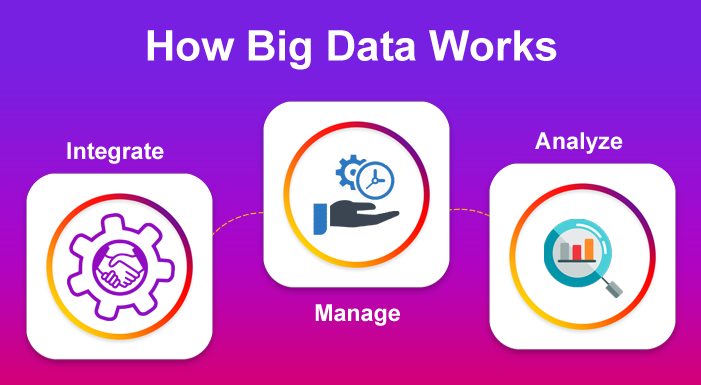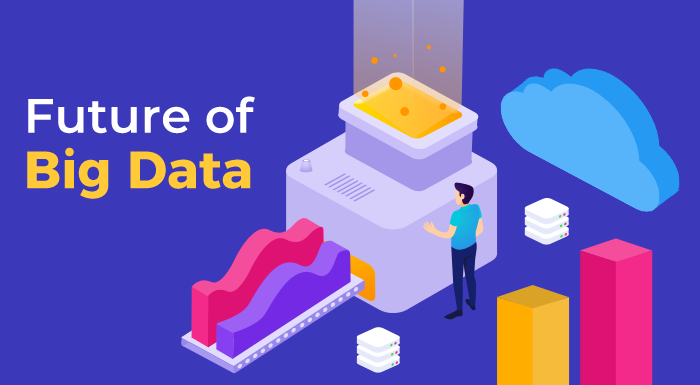|
A lot of people confuse the term “Big Data” with having an enormous amount of data or information. But it’s not that, it’s not about how much data you have, but what you do with your data. In this article, we are going to unravel what big data is meant for today’s world, what it is, how it works, who uses it, and a bunch of other amazing insights. But before going further blabbering about the big data technologies, we want to clear your view of data. In the later part of this blog, we will also be going to discuss the endless possibilities and benefits of Big Data in the CRM (Customer Relationship Management) industry. What is Data? Data can be defined as the formal representation of facts, figures, numbers, statistics, characters, or symbols which make it simpler to understand, transmit, communicate, and process. However, in the realm of information technology (IT), the definition of data is slightly different. As per IT, data is the set of information that is processed and stored in a computer. The information could contain any quantities, symbols, characters, or files and it is processed by the computer’s CPU. The elementary form of computer data is in the form of ones and zeros, which is also known as Binary Data. We hope now you have understood the meaning of data, we can move forward on the quest of learning about Big Data. What is Big Data? There is a generic statement that defines the broad meaning of Big Data, which states big data is a large volume of information coming from varied sources and at an even greater velocity. This is also known as three “V”s i.e. Volume, Variety, and Velocity. Types of Big Data We can broadly classify it into the following three categories:-
Understand this with an example, suppose you have different data sources that supply complex and large sets of data. The data sets are so colossal that your traditional data processing ecosystem can’t even imagine handling it. But this data possesses such immense value for your business that you can’t afford to lose it. In this case, big data comes into the picture. Now, you have learned rudimentary things about Big Data, we will show you how it works. How does Big Data work? Big data analysis could open up gates for insights that were never witnessed before. In this section, we will unfold the crucial three aspects of Big data working and analytics. The person who is responsible for the analysis is usually known as the Big Data engineer.
The best way to get an extensive return on investment is by creating an ecosystem of the latest technologies like the Internet of Things (IoT), Machine Learning, CRM (Customer Relationship Management), Artificial Intelligence, and Big Data. All of them with their individual functionalities and collective efforts can derive immense revenue to your business. Future of Big Data and CRM (Customer Relationship Management) For customer management and interaction, no other option comes into mind apart from CRM software. Whether it’s an existing client or a future prospective customer, CRM is the one that can do the job for you. Those who are familiar with the concept of CRM know that it comprises a lot of customer’s data. Generally, it is structured data in the form of contact information, sales funnel, etc. However, a business can get to the top level by leveraging the unstructured data of customers with the help of Big Data technology. There are plenty of ways to gather the customer’s data which they do directly provide to a business. Think of it like reading between the lines. The access to the insights that no one ever had, but you. Benefits of Integrating CRM and Big Data Some reports suggest that businesses that combine the forces of both CRM and Big Data for processing and analyzing the immense data flow are more likely to grow at an exponential rate. There are a bunch of Big Data technologies available in the market that can analyze the data stream coming from a CRM Database to provide unmatched customer service and experience.
20 Comments
5/18/2023 03:56:31 am
Great article! I had a good time browsing your website. I don't leave very often remarks, but you deservingly get a thumbs up! Thank you for letting me know with this information. It is very beneficial and helpful. Kudos!
Reply
12/20/2023 07:54:46 pm
Thanks for sharing this helpful information! I'm excited to check out some of your articles on your future posts.
Reply
12/20/2023 08:02:35 pm
I just read your article and I really enjoyed it. I thought you did a great job of explaining the topic in a clear and concise way.
Reply
<a href="https://bettowin.ph/phjoy-casino//">Click and Get 199 Bonus Here</a>
Reply
1/11/2024 03:28:16 pm
Thanks for sharing this helpful information! I'm excited to check out some of your articles on your future posts.
Reply
1/31/2024 08:03:24 pm
Wow! Such an informative article. Thank you for sharing this!
Reply
2/18/2024 06:57:25 pm
This site is very helpful! thank you for this information, check out my website for more!
Reply
Thank you for your valuable insights! Your perspective serves as a wonderful encouragement to uphold positivity and productivity amidst life's many demands. We'd love to extend an invitation for you to explore our website further, where you can discover a wealth of additional details and inspiring ideas.
Reply
Leave a Reply. |
Outright StoreOutright Store shares some preeminent plugins of Suite and SugarCRM software. We have some time-saving and dominant addons that are taking business into the next level. Get aware of what plugins we have. |





